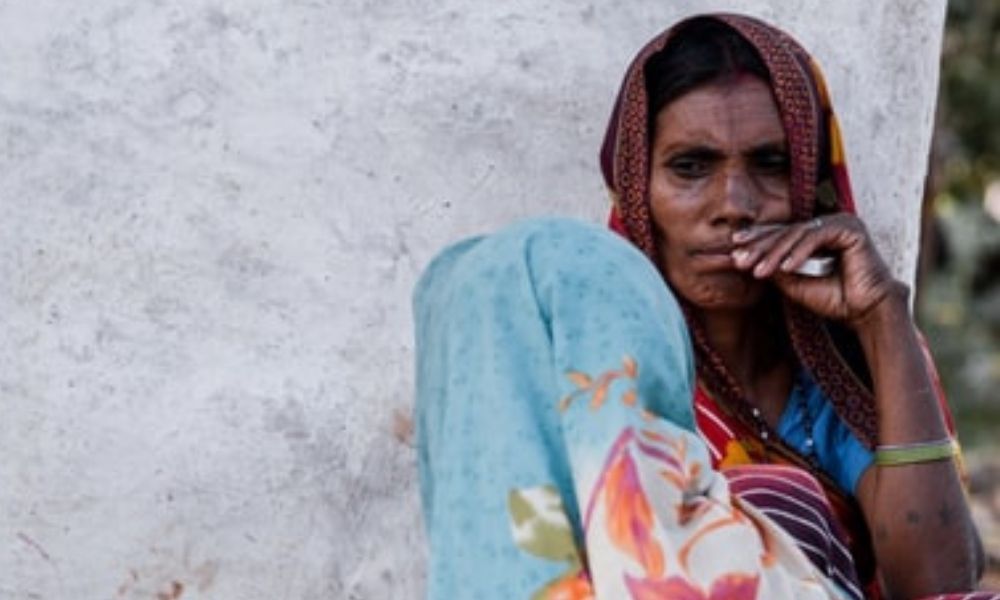
Image Credits: Unsplash
Bleeding During Pandemic: How COVID Impacted Women's Menstrual Health In Rural India
Writer: Tashafi Nazir
For most people, journalism sounds hectic and chaotic. For her, it's a passion she has been chasing for years. With an extensive media background, Tashafi believes in putting efforts on presenting a simple incident in the most interesting way.
India, 12 July 2021 10:10 AM GMT
Editor : Palak Agrawal |
Palak a journalism graduate believes in simplifying the complicated and writing about the extraordinary lives of ordinary people. She calls herself a " hodophile" or in layman words- a person who loves to travel.
Creatives : Tashafi Nazir
For most people, journalism sounds hectic and chaotic. For her, it's a passion she has been chasing for years. With an extensive media background, Tashafi believes in putting efforts on presenting a simple incident in the most interesting way.
Lack of access to period products and awareness have intensified the already existing gaps in menstrual hygiene management among the socioeconomically challenged families living in rural India.
The COVID-19 pandemic has affected the lives of millions of people across the globe in many ways— be it health-wise, economically, mentally, or socially. In India, the virus has created a significant impact on the life of citizens with far-reaching consequences. While the disease inevitably continues to create hardships for people, women are no exception. Among them, rural women are the ones who have, to a greater extent, borne the burden of the impacts of COVID-19. Losing jobs, poverty, absence of proper healthcare, attending unwell family members, the rural women had it all. For most women in rural India, easy access to menstrual health and hygiene was one of the major concerns.
According to a News18 report, women contribute to 48 per cent of India's population living in rural areas. Lack of resources that aid in healthy menstrual health dramatically affects their lives like restricting their movement, affects school participation and employment, and raises anxiety and depression.
School Drop-Outs
Regressive practices encouraged by societal norms are among the many challenges rural women face during their monthly cycles. As soon as the girls reach puberty, school dropout rates peaks. Even for those who do not opt-out of schools, the problem of chronic absenteeism remains, affecting educational outcomes. In addition, 40 per cent of girls students prefer to take leaves on the days they menstruate due to the stigma associated with it. Lack of sanitation facilities, inaccessibility of products, isolation, and embarrassment are some of the reasons the girls miss out on their education.
Schools in rural India have mostly been the convenient distribution point for sanitary napkins, unlike urban India. It is considered to be the ideal place where young girls can be socialised into accepting periods as natural. In addition, it teaches them how one could bring out a massive social change by demonstrating basic concepts like personal hygiene, usage of girls' toilets, the dos and don'ts during the monthly cycles, etc. With the educational institutions closed due to COVID-induced lockdown, it has left a significant impact on girls' menstrual health in rural areas.
Inaccessible Period Products
The supply chain of menstrual products has also been affected due to the pandemic. A survey conducted by Menstrual Health Alliance India (MHAI) recently stated that 84 per cent of women respondents agreed that sanitary pads were either unavailable or hard to access. This results in resorting to traditional methods like using cloth rags, leaves, and ash, which largely compromise a woman's reproductive health.
Pratibha Pandey, Senior Health Specialist, ChildFund India, told DTNext that lack of access to period products and awareness had intensified the already existing menstrual hygiene problems among the socioeconomically challenged families living in villages.
"Many migrant workers, who walked several miles from the cities where they worked to their native villages were women. Some of these women had to go days on the national highways, menstruating with only a light cloth to manage the same. They had no access to hygiene products or washrooms and their plight was truly horrifying. Medical shops in densely populated urban areas with low-income families reported the absence of affordable sanitary products," she said, adding that most of the girls who were dependent on free or subsidised products from government centres or NGOs, were deprived of the same.
Already, in rural India, according to the National Family Health Survey 5, less than half of the women used sanitary napkins. This worrisome trend shall continue as families continue to struggle to regain economic stability, said the expert.
"The use of such methods for a long time can lead to serious health consequences, leading to challenges in attaining equality in the education of the girl child and added burden on India's health system," she said, reported DTNext.
Stigma Restricts Awareness
Due to the taboos associated with periods, women and girls living in villages are also hesitant to wash and dry the rags properly in the sun before use. Such taboos may also cause a slippage back into traditional myths and misconceptions. In combination with the widespread belief that sanitary napkins are a luxury, they tend to depress the uptake of pads and other products. A regular and affordable supply of hygienic products can help break this vicious cycle.
Almost 70 per cent of the mothers surveyed across India termed menstruation as 'dirty', a study has found. Loss of livelihoods during the pandemic has forced many men to stay at home, because of which women with the extended family of male members try to hide or not purchase sanitary napkins out of shame.
Deteriorating Health Conditions
In addition to myths and taboos, 53 per cent of girls and women between the age group of 15-49 are affected by anemia due to the nutrition-reduced diet as most of them are ignorant about needs such as the increased requirement for an iron-rich diet.
According to a UK-based study, pre-menstrual symptoms during the pandemic have worsened among 53 per cent of the women surveyed. The catastrophic consequences of the pandemic have also unbalanced the menstrual cycles of otherwise healthy women, something that organisations and entities working in the area need to take note of.
Also Read: Belgian Woman Infected With Alpha, Beta Coronavirus Variants Dies
 All section
All section














